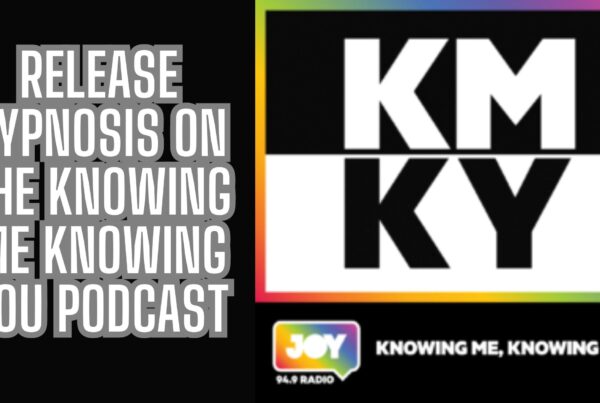The Integrative Model of Hypnosis: Unifying Theories and Practices
Exploring the ‘Integrative Model of Hypnosis’, this blog delves into the ancient practice’s fascinating evolution, backed by a wealth of research. It highlights its clinical efficacy and effectiveness in addressing a range of physical and mental conditions, while also shedding light on its historical development and diverse theoretical perspectives.
Hypnosis Through the Ages: A Historical Perspective
The therapeutic use of hypnosis, a practice steeped in history, traces its roots back to ancient civilizations. Historically, it was used in various cultural rituals and healing ceremonies, often shrouded in mysticism and intrigue. Its journey into the medical realm began to take shape in the 18th and 19th centuries, marking a pivotal shift in its application and perception. Pioneers like James Braid were instrumental in this transition. Braid, often regarded as the father of modern hypnotism, utilized hypnotic techniques primarily for acute pain management, employing methods such as eye fixation to induce trance states. His work laid the foundation for hypnosis as a scientific discipline, moving it away from the realms of magic and into the sphere of medical treatment.
Hypnotic Anasthesia
The 19th century witnessed a significant milestone in the evolution of hypnosis with the advent of hypnotic anaesthesia. This period saw surgeons like John Elliotson and James Esdaile perform hundreds of painless surgical procedures using hypnosis, challenging the traditional methods of pain management. Despite initial skepticism, the successful use of hypnotic anaesthesia in surgeries marked a turning point, demonstrating its practical efficacy. The practice of hypnosis continued to evolve, receiving a notable boost from Sigmund Freud. Freud, who initially utilized hypnosis in his psychotherapeutic methods, contributed to its growing legitimacy in the field of mental health. However, it was in the 20th century, particularly in the 1930s, that hypnosis research took a more rigorous scientific approach. Figures like Dr. Clark Hull and Dr. Milton Erickson played a crucial role in this era. Erickson, in particular, is celebrated for his innovative and diverse psychotherapeutic approaches that incorporated hypnosis, thereby deeply entwining it with the field of psychotherapy. This period marked the beginning of modern hypnosis research, setting the stage for its current scientific understanding and widespread therapeutic use.
Theoretical Perspectives on Hypnosis
Several theories have been proposed to explain hypnosis, each highlighting different aspects of this complex phenomenon:
- State Theories: These theories describe hypnosis as a distinctive state of modified awareness characterized by heightened suggestibility and automatic responding.
- Dissociative Theories: They emphasize the disruption of conscious cognitive control processes during hypnosis, underscoring the role of dissociation in hypnotic responding.
- Social-Cognitive Theories: These theories view hypnosis as a goal-oriented, non-automatic active process, contingent on the individual’s response expectancies and active participation.
- Relational Theories: Focus on the interpersonal processes and factors involved in hypnosis, such as the rapport and interaction between the hypnotherapist and the client.
State Theories
states, hypnosis leads to heightened suggestibility and automatic responses. Proponents believe this state involves focused attention and reduced peripheral awareness, identifiable through neurophysiological measures. They argue that this state allows deep processing, altering perception, memory, and bodily control.
Dissociative Theories
Dissociative theories describe hypnosis as a psychological separation process. They propose that hypnosis disrupts conscious cognitive control. This theory suggests a disconnect during hypnosis between different consciousness aspects. Such a separation enables unique experiences like pain relief and amnesia, as individuals become less aware of their actions or experiences.
Social-Cognitive Theories
Social-cognitive theories emphasize the role of social and cognitive factors in hypnosis. They view hypnosis as a result of individual attitudes, beliefs, and motivations, rather than a unique state. These theories propose that hypnosis effectiveness depends on the individual’s engagement and expectations. Thus, hypnotic phenomena stem from normal social processes, including suggestion power, role-playing, and social compliance.
Relational Theories
Relational theories focus on the interpersonal dynamics of hypnosis. They highlight the importance of the relationship between the hypnotherapist and the client. These theories view hypnosis as a collaborative creation of experience. They stress that therapeutic alliance, trust, and rapport are key. This approach considers individual differences and cultural backgrounds as significant influencers in the hypnotic process.
Hypnotic Procedures and Their Impact
Hypnosis involves a set of procedures that typically include induction, suggestions, and de-induction:
- Induction Phase: This phase involves preparing individuals for hypnotic suggestions, promoting focused attention, and enhancing expectations of positive responses.
- Suggestions Phase: This crucial phase involves delivering verbal communications to prompt individuals to perform actions or experience changes in perceptions, cognitions, or sensations. In therapy, suggestions are used to promote positive outcomes like relaxation and pain relief.
- De-Induction Phase: This phase involves concluding the hypnotic session and restoring ordinary alertness.
The Evolution and Adaptability of Hypnosis
The landscape of hypnosis today stands testament to its remarkable adaptability. This versatile tool can be tailored to suit a wide array of populations and contexts, making it a highly accessible form of therapy. From live, interactive sessions in clinical settings to the convenience of self-hypnosis techniques for personal use, hypnosis demonstrates a unique flexibility. This adaptability extends to various formats, whether it be guided sessions with a professional, digital platforms, or even audio recordings. Such diverse applications allow individuals from different backgrounds and with varying needs to benefit from hypnotic techniques, ensuring that this ancient practice remains relevant in our modern world.
Moreover, the growing body of evidence-based research supporting the utility of hypnosis significantly bolsters its credibility as a therapeutic intervention. As studies continue to reveal the efficacy of hypnosis in treating a range of conditions—from chronic pain to psychological disorders—its acceptance within the medical and psychological communities has seen a notable increase. This recognition is not just within the realms of alternative or complementary medicine but also in mainstream healthcare practices. The integration of hypnosis into various therapeutic modalities reflects a broader understanding of its potential and a willingness to embrace a more holistic approach to health and wellness, one that acknowledges the intricate connection between the mind and the body.
The Future of Hypnotic Practice
As we continue to explore and understand hypnosis through research and clinical practice, it evolves into an integrative model that encompasses multiple procedures, phenomena, and influencing factors. This integrative approach promises to further our understanding of hypnosis, promoting its adoption and implementation in therapeutic settings.
Hypnosis remains a fascinating and evolving field, with its rich history and diverse theoretical foundations contributing to its current status as a respected and versatile therapeutic tool. As research continues to unfold the mysteries of the human mind, hypnosis stands as a testament to the intricate interplay between the mind and body, and its potential to heal and transform.
This blog is based on this research here.
Release Hypnosis Melbourne Hypnotherapy
Since 2016, Lawrence Akers has been working under the name Release Hypnosis offering Hypnotherapy and ACT based work to the people of Melbourne or an online service. Based on St Kilda Rd, Release Hypnosis is an easy and convenient location to get to and accessible by the ANZAC station train and tram stop. Release Hypnosis can help with a wide range of presenting issues, and I offer a free 30 minute no obligation discovery call for those who are unsure if hypnotherapy is the right way forward for them.
Book Your FREE 30 Minute Consultation With Release Hypnosis NOW!
You may also like to read:
Discovering Purpose and Values: A Path to Mental Well-being
Can’t Visualise in Hypnosis? Here’s What You Can Do Instead.
Dealing with Financial Stress and Crisis: Finding Peace Amid Turbulence
What Is The Success Rate of Hypnosis?








